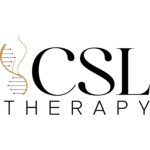Public Knowledge
Public
Knowledge
Working in the health care field can be both rewarding and challenging. Each shift a provider works and session they offer is filled with new patients, sometimes unexpected experiences, and many choices that will have positive and negative consequences on someone’s health.
Due to health care being such a dynamic environment, the standard four principles of health care ethics were created to support professionals as you navigate patient care. These principles are autonomy, beneficence, non-maleficence, and justice.
From there, the seven principles of CSL Therapy were created revolving around doing no harm, need based treatments, form and function, trauma remodeling cycles, closed systems, science based therapies, and client advocacy. Each of these principles has a unique objective, but the seven come together to empower providers as healthcare professionals and ensure that you, the patient, are receiving high quality and ethical care.
The Cornerstones of CSL Therapy:
Efforts to help others shouldn’t ever come at the expense of hurting; whether this is body mechanics, compromised integrity or values, or putting profits before ethics. Clients deserve a safe space to chase their body goals, while moving through an industry that purports ideals that uphold the Hippocratic oath.
Treatments, policies, and advances are to be on a needs based only. One of the greatest things we can provide our clients and colleagues are educational efforts based on the needs of the audience. We don’t provide treatments that aren’t needed or until their body displays a need for them, no more than we provided information or make laws outside of the presented need for them. Every stroke has a purpose, every action or next step has a defined reason as to why we do or don’t do.
Helping clients’ achieve identified body goals are based upon their form and foundation; not every body type responds the same and individuality should always be taken into consideration. By taking the time to identify variable needs, forms, and current functions, generalized concepts of best practices may be applied to amplify function; goals are reached faster with less complications from start to finish.
Following the body’s natural response to trauma, remodeling transpires on macro and micro levels. For every introduction of disruption whether physical, emotional, mental, within every aspect of the CSL Therapy organization, remodeling responses will succeed to improve the weakened areas. Consequentially, should trauma be introduced too soon or outside of need, over/premature development ensues.
The human body is a closed system. To be effective on a closed system, the entire system has to be addressed and not just the area you want to change. This is implicated on theoretical levels from preOp approaches, actual treatments and procedures, recovery accommodations, postoperative indurated experiences, and noninvasive services. At no time should the focus ever solely be on the desired area of change.
One of these three (if not all three) were commonly missing from the average Body Altering Aesthetics industry practices. As organization was introduced we focused on infusing science, bedside manner, and quality ethics back into the elective cosmetic healthcare space with the goal of public safety and high healthcare— keeping clients the focus over profits or egotistical driven advances.
“Self love, Self Terms”. Our client’s canvases are still their bodies and within realms of safe practices should their boundaries be respected at all times. Optimal personal and professional goals are to be achieved by maximizing the space between what’s desired and what’s possible. Within this duality, a balance is to be reached for each client, each practice, and each agency enforced codes of ethics void of discriminatory practices, capitalistic precedences, & low level limited intellectual preferences.

